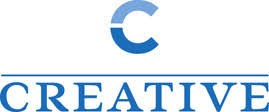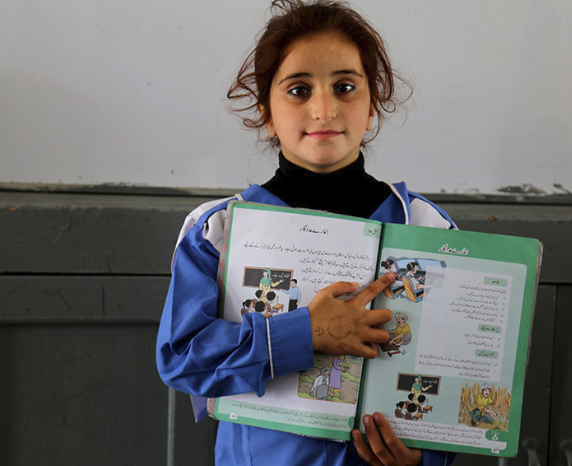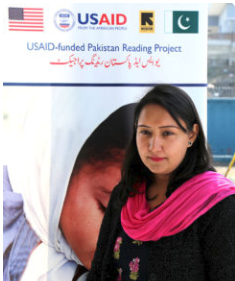
Promoting Gender Equality in Pakistan Through Inclusive Textbooks
By Ashley Williams and Dr. Shaheen A. Shah | June 13, 2019

Aaliya points to the female pilot in her textbook.
When 8-year-old Aaliya reads her grade 2 textbook, she sees a future of opportunities ahead. Her favorite chapter is called “People Who Help Us” and, as she flips through the pages, she sees men and women working side by side in interesting professions. Aaliya dreams of taking to the skies and becoming a pilot like the woman illustrated in her book.
This increased gender representation in textbooks is a recent phenomenon in Pakistan, and it may have a profound impact.
Women and girls in Pakistan face an uphill battle in and out of the classroom. A mere 43.4 percent of girls make it to secondary school and only 25 percent of the total labor force is comprised of women. Pushing these numbers upward can help make strides across the country on issues like economic development, the health of children and shifting beliefs on the role of women in society.
As part of reading reforms, the Ministry of Federal Education and Professional Training recently revised the language textbooks that are now being used in all public schools of the Islamabad Capital Territory.
The Pakistan Reading Project provided technical assistance to the government counterparts in the revision process to ensure integration of reading skills and gender equality in the newly developed textbooks.
As a result, women’s representation in grade 1 Urdu textbooks has increased in content (from 33 to 49 percent), illustrations (from 14 to 47 percent) and in leading roles (from 27 to 44 percent). Grade 2 textbooks have seen similar gains.
“These learning materials are far more inclusive than past resources,” explains Dr. Shaheen A. Shah, the project’s Director of Gender, while evaluating the revised textbooks through a gender lens.
By and large textbooks in Pakistan still show gender bias in favor of men, providing greater representation to men especially in leadership positions, illustrations, sports, occupations and a majority show men and women in stereotypical roles.
Nabila Kousar – a public school assistant head mistress who mentors teachers trained by the Pakistan Reading Project – is pleased to see increased inclusivity and diversity in revised textbooks. She believes the most important messages in the book are the ones encouraging a peaceful and respectful world, especially for minorities and women. Kousar says the materials’ images of women in leading positions encourage girls to prepare themselves for leading roles in the future.

Nabila Kousar, a public school assistant head mistress who mentors teachers trained by the Pakistan Reading Project
Taking Inclusive Textbooks to Scale
The Pakistan Reading Project, funded by the United States Agency for International Development, is implemented by the International Rescue Committee (IRC) in partnership with Creative Associates International, World Learning and IRM across Pakistan.
To date, Pakistan Reading Project has reached 1.38 million students and trained 25,049 teachers in reading instruction, of which 48 percent are girl learners and 40 percent are female teacher beneficiaries. It has also developed and distributed 5.3 million new reading learning materials across Pakistan for teachers, students and education officials in Urdu, Sindhi, Pashto, Balochi and Brahui languages for early grade readers.
“Pakistan’s education policies, plans and curricula are fully committed to promote gender equality. However, it is important to make deliberate efforts, since such things are not going to happen automatically,” he says.
By integrating women and girls into all powerful spheres of social and economic development, the materials promote a future where girls like Aaliya can grow up to be pilots – or anything else men can be.